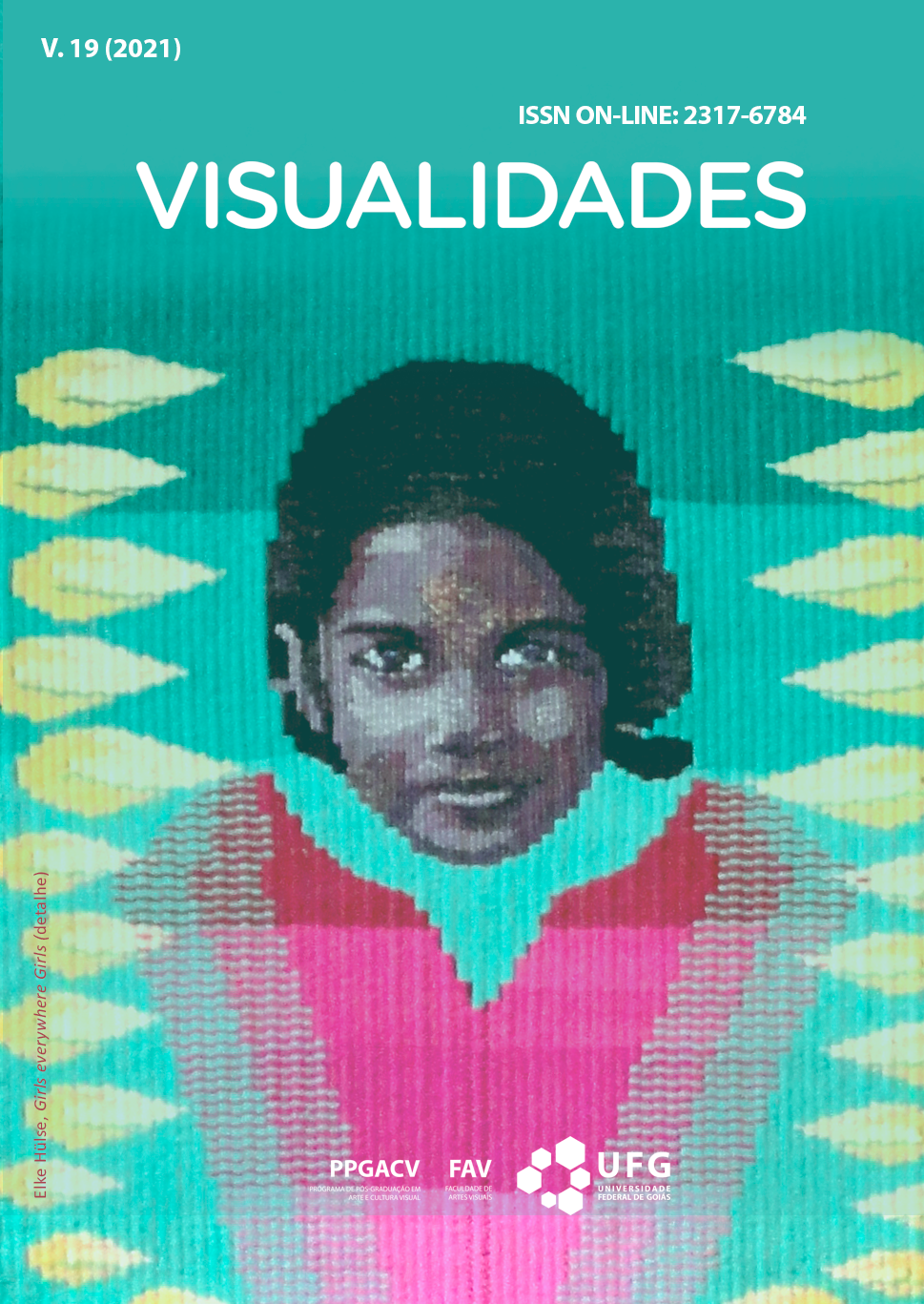Silvestre, by Wagner William: constelation and trace
DOI:
https://doi.org/10.5216/v.v19.65576Keywords:
Comics, Walter Benjamin, Aby WarburgAbstract
This article analyses the work Silvestre, by Wagner William, through notions extracted from the dialogue between Walter Benjamin and Aby Warburg, under the mediation of George Didi-Huberman. With the help of those theorists, it will be possible to demonstrate how comics are privileged territories for the discussion about the history of culture, its crisis and maintenance procedures, besides establishing a concept of image that emphasizes its deconfiguring, shapeless, non-representable and semi-legible elements, procedures that turn into a strategy of poetic realization.
Downloads
References
BENJAMIN, W. Passagens. Belo Horizonte: Universidade Federal de Minas Gerais; São Paulo: Imprensa Oficial do Estado de São Paulo, 2007.
DIDI-HUBERMAN, Georges. O que vemos, o que nos olha. Tradução Paulo Neves. São Paulo: Ed. 34, 1998.
POUND. Ezra. ABC da literatura. São Paulo: Cultrix, 2006.
MCCLOUD, Scott. Desvendando os quadrinhos. São Paulo: M.Books do Brasil Editora Ltda, 2005.
WARBURG, Aby. A presença do antigo. São Paulo: Editora da Unicamp, 2018.
WILLIAM, Wagner. Silvestre. São Paulo: Editora Darkside, 2019.
Downloads
Published
How to Cite
Issue
Section
License
Copyright (c) 2022 Visualidades

This work is licensed under a Creative Commons Attribution 4.0 International License.

This work is licensed under a Creative Commons Attribution 4.0 International License .
Authors who publish in this journal agree to the following terms:
a. Authors retain the copyright and grant the journal the right of first publication, with the work simultaneously licensed under the Creative Commons Attribution 4.0 License which allows the sharing of work with acknowledgment of authorship and initial publication in this journal.
b. Authors are authorized to take additional contracts separately, for non-exclusive distribution of the version of the work published in this journal (eg publish in institutional repository or as a book chapter), with acknowledgment of authorship and initial publication in this journal.
c. Authors are allowed to publish and distribute their work online (eg in institutional repositories or on their personal page) after the initial publication in this journal, as this can generate productive changes, as well as increase the impact and citation of the published work ( See The Effect of Free Access).
Every effort has been made to identify and credit the rights holders of the published images. If you have rights to any of these images and have not been correctly identified, please contact the Visuals magazine and we will publish the correction in one of the next issues.






